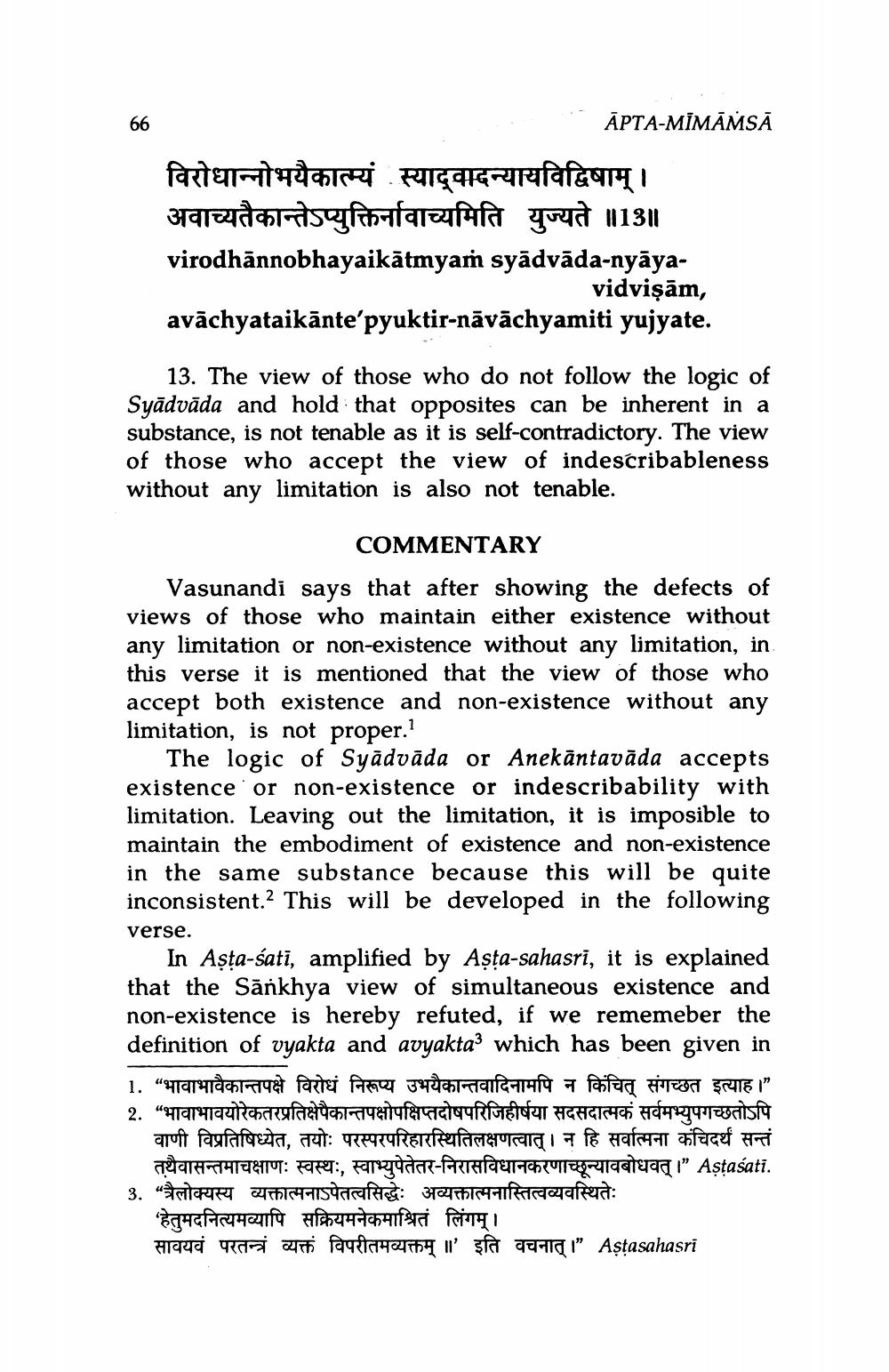________________
66
ĀPTA-MĪMĀŃSĀ विरोधान्नोभयैकात्म्यं स्याद्वादन्यायविद्विषाम् । अवाच्यतैकान्तेऽप्युक्ति वाच्यमिति युज्यते ॥13॥ virodhānnobhayaikātmyam syādvāda-nyāya
___vidvisam, avāchyataikānte'pyuktir-nāvāchyamiti yujyate.
13. The view of those who do not follow the logic of Suādvāda and hold that opposites can be inherent in a substance, is not tenable as it is self-contradictory. The view of those who accept the view of indescribableness without any limitation is also not tenable.
COMMENTARY Vasunandi says that after showing the defects of views of those who maintain either existence without any limitation or non-existence without any limitation, in this verse it is mentioned that the view of those who accept both existence and non-existence without any limitation, is not proper.1
The logic of Syādvāda or Anekāntavāda accepts existence or non-existence or indescribability with limitation. Leaving out the limitation, it is imposible to maintain the embodiment of existence and non-existence in the same substance because this will be quite inconsistent. This will be developed in the following verse.
In Asta-sati, amplified by Asta-sahasri, it is explained that the Sānkhya view of simultaneous existence and non-existence is hereby refuted, if we rememeber the definition of vyakta and avyakta3 which has been given in 1. "भावाभावैकान्तपक्षे विरोधं निरूप्य उभयैकान्तवादिनामपि न किंचित् संगच्छत इत्याह।" 2. “भावाभावयोरेकतरप्रतिक्षेपैकान्तपक्षोपक्षिप्तदोषपरिजिहीर्षया सदसदात्मकं सर्वमभ्युपगच्छतोऽपि
वाणी विप्रतिषिध्येत, तयोः परस्परपरिहारस्थितिलक्षणत्वात्। न हि सर्वात्मना कंचिदर्थं सन्तं
तथैवासन्तमाचक्षाणः स्वस्थः, स्वाभ्युपेतेतर-निरासविधानकरणाच्छून्यावबोधवत्।” Astasati. 3. "त्रैलोक्यस्य व्यक्तात्मनाऽपेतत्वसिद्धेः अव्यक्तात्मनास्तित्वव्यवस्थितेः
'हेतुमदनित्यमव्यापि सक्रियमनेकमाश्रितं लिंगम्। सावयवं परतन्त्रं व्यक्तं विपरीतमव्यक्तम् ॥' इति वचनात्।” Astasahasri




